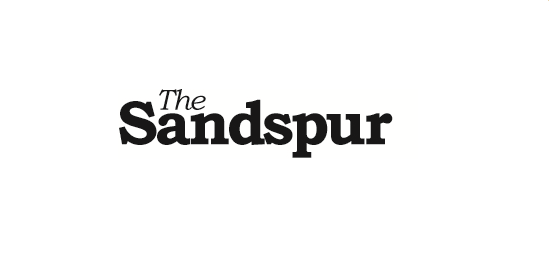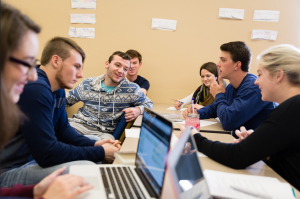With more than 120 new neighborhood courses, it seems like the neighborhood system is here to stay. As a result of the hard work and dedication of the professors who design these courses, students will be able to find their niche while being introduced to a wide range of fields from their respective neighborhoods. This is what a liberal arts education stands for.
Students who vividly remember their respective neighborhood induction ceremonies will also remember their corresponding neighborhood mayors, who led them in their respective oaths of fidelity and sister/brotherhood.
“Faculty whose courses study the theoretical and practical aspects of creativity usually feel that ICE is the best neighborhood for their pedagogy,” explained Dr. Gloria Cook, head of the Innovate, Create, Elevate (ICE) neighborhood, which encourages students to challenge conventions.
Dr. Todd French, mayor of Mysteries and Mayhem, discussed the appeal of his neighborhood’s course offerings: “I think it is the willingness many of our faculty have to think about big questions that may not have simple answers readily available to them. Students love mysteries. Indeed, in my lifespan I would say I have encountered more mysteries than simple facts. We explore these questions about our world and what it means to be a citizen of it from a range of perspectives. I think this speaks to students’ own experiences of their worlds.”
The other two neighborhood options are When Cultures Collide, which encourages “[examination] of the scientific, artistic, literary, cultural, and socioeconomic effects of our evolving world,” according to the Rollins Neighborhood Homepage; and Identities: Mirrors and Windows, in which students “put [themselves] under the microscope (literally and figuratively!) by exploring the diverse components that factor into the construction of the self.”
French believes that “the new curriculum offers students a more engaged learning experience than the old general education system, because students are exposed more fully to the liberal arts and develop specific life skills like critical thinking and ethical reasoning.”
Though French also acknowledges early obstacles the new curriculum has faced, he remains optimistic: “I know the new system has been challenging on a number of fronts, but I think all innovative curriculum changes require significant flexibility and patience on the part of all parties involved. I am most excited about the role of the 300-level course in our neighborhood.”
New upper-level courses that the Rollins Foundations in the Liberal Arts (rFLA) system will offer next year include Crime Scene Chemistry; Mysteries of the Bible; Racial Fictions; the Dialogic Self ; the Psychology of Stress; Creating the Future; Murder, Memory, Maya; and Technology and Human Flourishing.
Cook is also very positive about the neighborhood system’s success. “I strongly believe that all four neighborhoods are beginning to take on some distinctive characteristics. For ICE, being innovative and creative is about students having the courage to explore, experiment, question assumptions and use imagination to discover their own unique skills in solving problems. Creativity lives in all of us, we just need to have the right tool to awaken it,” she said.
Everyone is encouraged to check out the updated Fall 2016/Spring 2017 course schedules for next year’s rFLA offerings, or to visit their respective neighborhood’s page on the Rollins website to find out more about new courses.








Be First to Comment